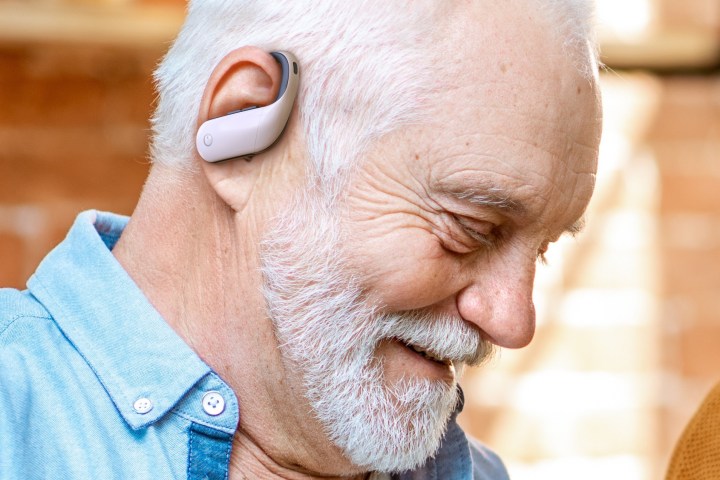Hearing aids have traditionally been very expensive investments, both in money — with prices that can easily end up in the thousands — as well as time, with visits to an audiologist being a requirement. But lately, a slew of new wireless earbuds have been showing up as cost-effective alternatives, and Olive Union’s Olive Max might just be the most affordable choice yet. The Olive Max will sell for $549 when they become generally available in the fourth quarter of 2022, but for a limited time, they can be pre-ordered starting April 5, 2022, for $299.

The Olive Max look a lot like the kind of wireless earbuds you might see someone wearing at the gym — like the Powerbeats Pro — and that’s exactly the point. “Today, true wireless earbuds are everywhere,” Olive Union’s press release says, “allowing Olive to make design decisions that create hearing health technology that look, feel, and function just like them — so only the wearer decides if someone should know about their hearing health.”
Underneath their sporty, earhook shape lies a Food and Drug Administration (FDA) class 2 hearing aid with support for mild to severe hearing loss, that also doubles as a regular wireless earbud for listening to your music and taking calls. The Olive Max aren’t Olive Union’s first hearing-enhancing devices. In 2021, the company released the Olive Pro, a set of earbuds that bear a strong resemblance to Apple’s AirPods Pro. The company says that it developed the Olive Max’s key feature — adaptive hearing — in response to the many people who have used the Olive Pro.
Adaptive hearing is an automatic feature that employs artificial intelligence and machine learning technology to continuously learn and customize sound settings to the specific user’s environment. The Olive Max can be worn and used for up to 8 hours before needing to be recharged. Their charging case extends that time to more than 18 hours.

Using a companion app, you can self-administer a five-minute hearing test to help dial in the right settings, plus it gives you access to EQ settings and the ability to customize button functions. With an IPX6 rating for water resistance, they should be able to withstand even an accidental dunk in water as long as it’s short. Embedded wear sensors can automatically pause your music when you remove an earbud, and resume it when you wear it again.
There’s just one catch, and it likely explains why the Olive Max won’t start shipping until later this year. The FDA has yet to finalize a rule that would let companies like Olive sell class 2 hearing aids “over the counter” — in other words, without the involvement of an audiologist. Once that rule is formally announced, Jabra, Bose, Eargo, and Olive will be able to sell directly to customers in all 50 states. Right now, however, each state has its own rules, making it hard for anyone to know what’s actually available to them.
The pending rule change is why you’ve likely seen devices that offer hearing aid features marketed under a variety of terms, like “hearing earbuds” — this is actually how Olive Union describes the Olive Pro. Technically, these devices (which include the Nuheara IQBuds2 Max) are considered personal sound amplification products (PSAPs), and while they may offer some of the benefits of true hearing aids, they tend to offer much lower levels of amplification.
Olive Union claims that the Olive Max, by contrast, will offer amplification for people suffering up to 82dB of hearing loss. Any hearing loss between 71-90dB is considered severe, and can totally compromise someone’s ability to hear speech.
Editors' Recommendations
- Two years later, over-the-counter hearing aids are still finding their groove
- Sennheiser’s All-Day Clear are its first OTC hearing aids
- JLab’s new earbuds are smaller than a dime, and it says $99 hearing aids are on the way
- These are Sony’s first over-the-counter hearing aids
- Sony to bring over-the-counter hearing aids to the masses





